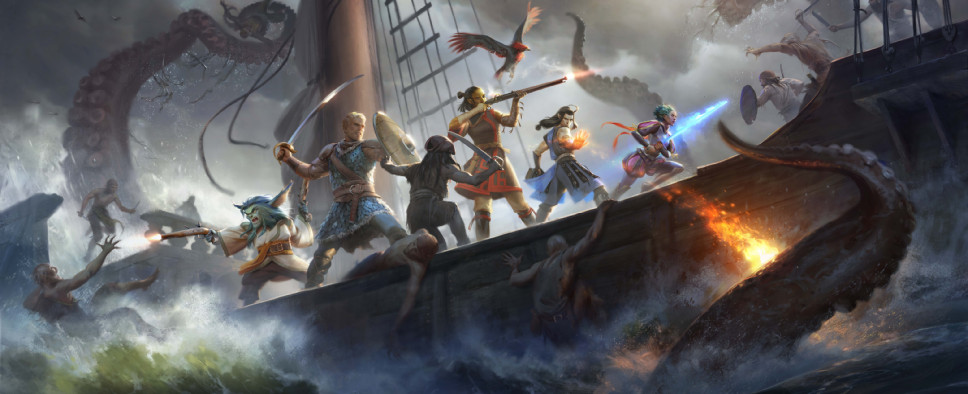Pillars of Eternity II: Deadfire Preview
-
Category: PreviewsHits: 12446

Article Index
Introduction
Pillars of Eternity II: Deadfire is the sequel to Obsidian Entertainment's Pillars of Eternity, which was released in 2015 as something of an homage to BioWare's classic RPGs from the late 90s and early 00s. Obsidian was kind enough to provide us with a preview copy of the game, which is the same as the version they used for a recent closed beta. That is, the version includes a slice of the game, but it doesn't contain anything about the story or the companions, so in this preview I'll concentrate mostly on the gameplay mechanics.
Characters
As is the case for just about every RPG ever released, the first thing you do in Deadfire is create your character. This works about the same as it did in the original Pillars of Eternity. There are still six races (aumaua, dwarf, elf, godlike, human and orlan), eleven classes (barbarian, chanter, cipher, druid, fighter, monk, paladin, priest, ranger, rogue and wizard), six attributes (constitution, dexterity, intellect, might, perception and resolve), seven cultures, and sixteen backgrounds.
But there are also a few changes. All of the classes get subclasses now (instead of just paladins and priests), the number of skills (like athletics and history) more than doubled, weapon proficiencies were added, and abilities, spells and talents were reworked and reorganized. You can also choose to play the game as a single class character or a multiclass character now, where the latter gets the abilities / spells / talents from both classes but levels up more slowly and can't reach the highest peaks of their single class counterparts.
You also get to travel with a party of characters. The party size was reduced from six to five to make combat "more streamlined and easier to follow" (according to the baby manual I received). You can sometimes choose the character you want to do something (like climb down a rope), so having a well-balanced party is a good idea. But something new in Deadfire is that your party can help the selected character with their skills. So if you're trying to disarm a trap, then the game will start with your rogue's mechanics skill and then add in a boost if other characters have mechanics as well. I couldn't tell exactly how the boost works, but it was always a small amount (like +1 or +2). This system might make it more advantageous to spread points around rather than have five specialists in your party. Otherwise, companion characters look like they work and advance just like the main character.
Gameplay
In Deadfire just like Pillars of Eternity before it, you visit towns so you can talk to people, go shopping, and rest at an inn, you explore the world map while completing quests, and you kill lots of creatures during tactical combat. Let me tackle each of these areas in turn.
The Deadfire build I played had one town, a coastal village of aumauas just trying to survive. I picked up three quests in this town, and all three had at least two solutions. As an example, in the simplest quest you learn that one of the villagers has been accused of theft. As you investigate the crime, you discover that the villager is innocent -- but that he has done enough other things that maybe he deserves the thievery punishment. So do you clear him or not? The quests in Deadfire don't look like they're going to have just "good" or "evil" solutions, but instead you'll get options where you'll to have to decide which one is the most fitting. I like dealing with gray areas more than black and white, so this is a fine style for me.
Then when you explore the world map, you don't just click on a location and automatically travel there. Instead, you click to move using a system similar to the one employed by Neverwinter Nights 2: Storm of Zehir (which, not coincidentally, was also developed by Obsidian). That means while you're moving around, you might discover something to loot, or a creature to fight, or a dungeon to visit. I saw "sparkles" over areas where there were interactions, which gave away their location too easily, but hopefully sparkles only appear based on the perception level of your party rather than all of the time. I prefer the "walking around" system of Deadfire to "clicking and traveling" system of Pillars of Eternity -- provided there are enough interesting things to see on the world map to make the extra effort worthwhile, which there isn't any way to tell yet.
Of course, with Deadfire you don't just travel by land. The "Deadfire" in the game's title refers to the Deadfire Archipelago, which includes numerous islands, and so you also do some sailing via ship. That means you have to watch out for other ships, including hopefully pirates! (The build I played just had anonymous ships to attack.)


